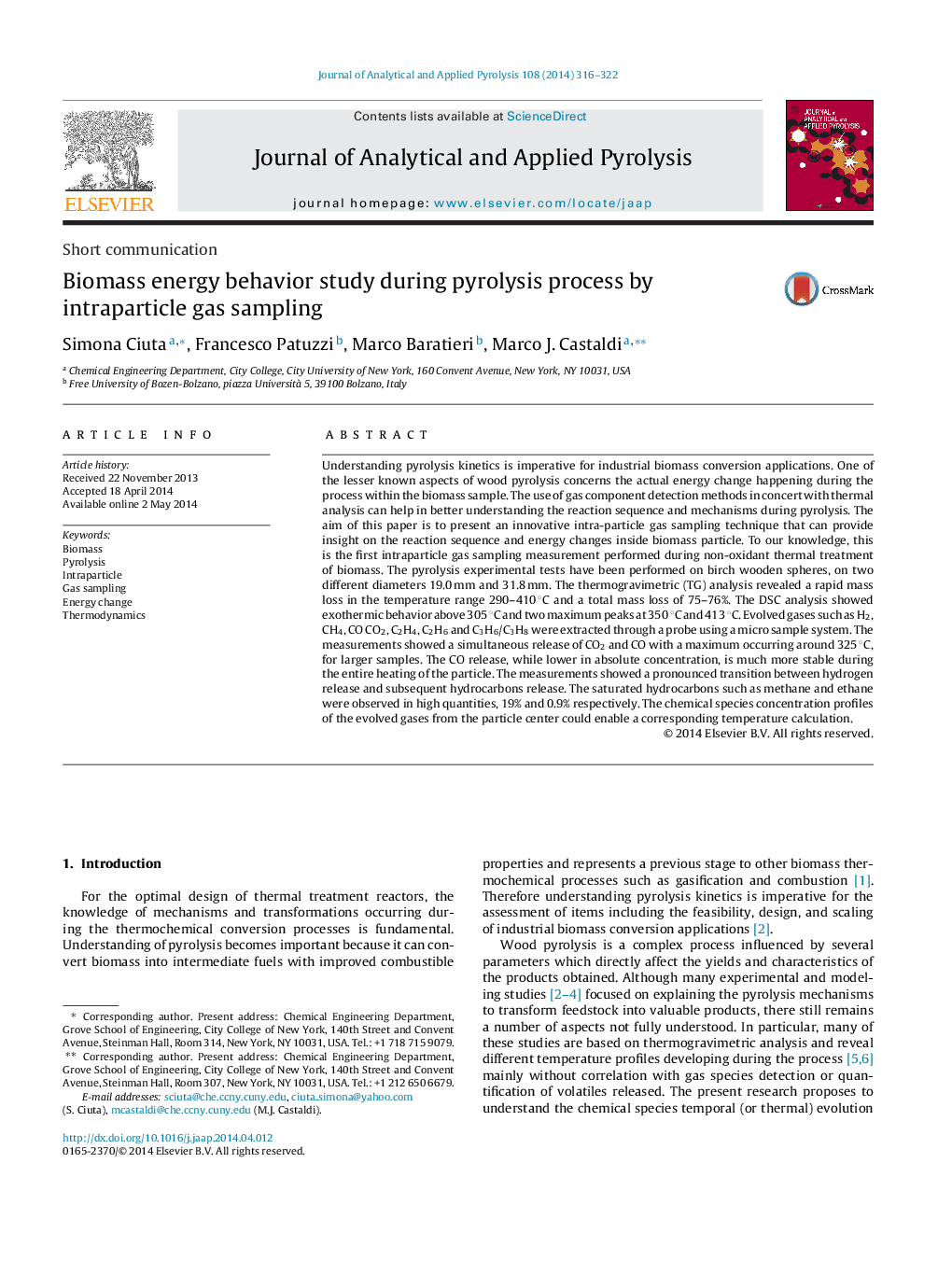| Article ID | Journal | Published Year | Pages | File Type |
|---|---|---|---|---|
| 1196690 | Journal of Analytical and Applied Pyrolysis | 2014 | 7 Pages |
•Gas component detection in concert with thermal analysis was used during pyrolysis.•First biomass intraparticle gas sampling technique presented.•Possible connection of reactions occurring within the solid sample.•Surface and center temperature variation observed with attempted explanation.•Potential for gas analysis to give an insight on reaction sequences occurring.
Understanding pyrolysis kinetics is imperative for industrial biomass conversion applications. One of the lesser known aspects of wood pyrolysis concerns the actual energy change happening during the process within the biomass sample. The use of gas component detection methods in concert with thermal analysis can help in better understanding the reaction sequence and mechanisms during pyrolysis. The aim of this paper is to present an innovative intra-particle gas sampling technique that can provide insight on the reaction sequence and energy changes inside biomass particle. To our knowledge, this is the first intraparticle gas sampling measurement performed during non-oxidant thermal treatment of biomass. The pyrolysis experimental tests have been performed on birch wooden spheres, on two different diameters 19.0 mm and 31.8 mm. The thermogravimetric (TG) analysis revealed a rapid mass loss in the temperature range 290–410 °C and a total mass loss of 75–76%. The DSC analysis showed exothermic behavior above 305 °C and two maximum peaks at 350 °C and 413 °C. Evolved gases such as H2, CH4, CO CO2, C2H4, C2H6 and C3H6/C3H8 were extracted through a probe using a micro sample system. The measurements showed a simultaneous release of CO2 and CO with a maximum occurring around 325 °C, for larger samples. The CO release, while lower in absolute concentration, is much more stable during the entire heating of the particle. The measurements showed a pronounced transition between hydrogen release and subsequent hydrocarbons release. The saturated hydrocarbons such as methane and ethane were observed in high quantities, 19% and 0.9% respectively. The chemical species concentration profiles of the evolved gases from the particle center could enable a corresponding temperature calculation.
